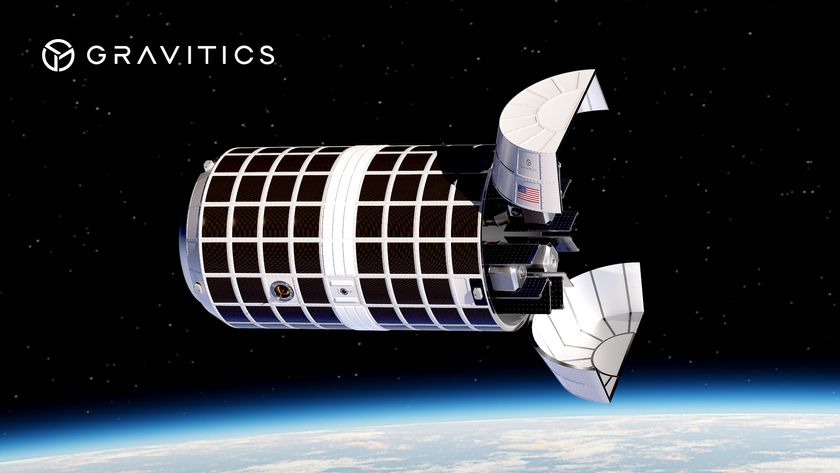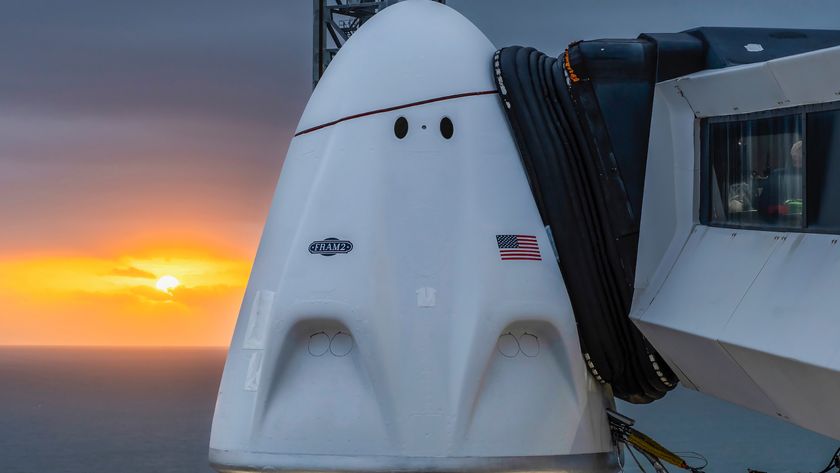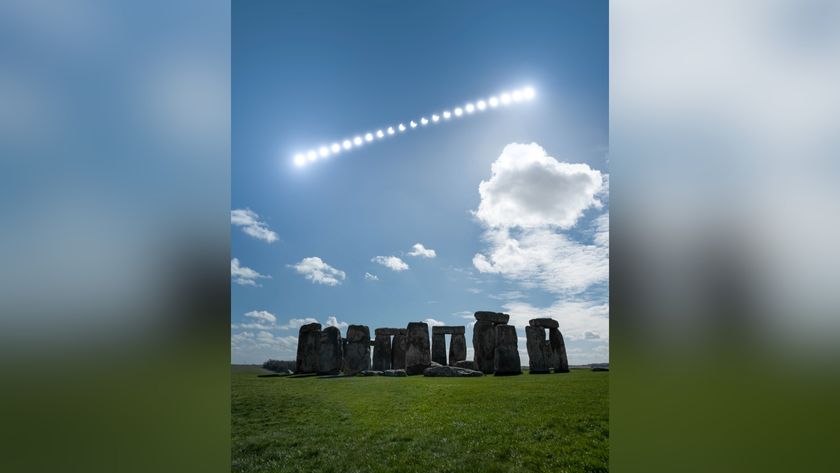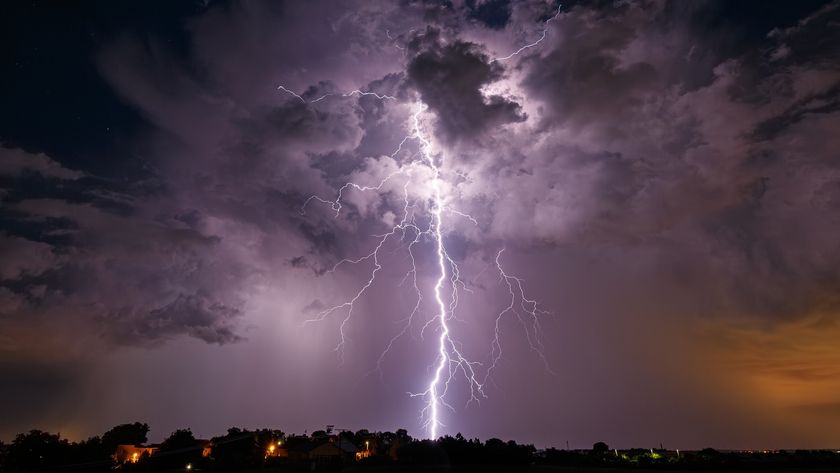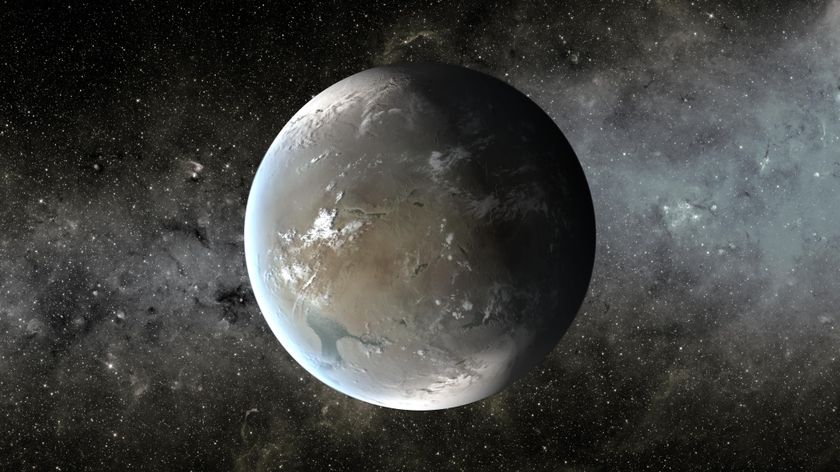Mars Meteorites Create Water Mystery
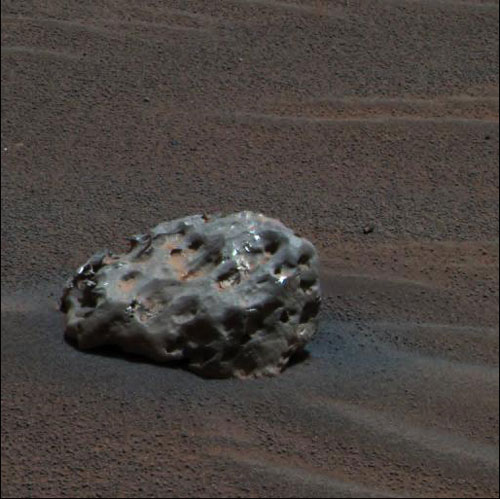
The identification and study of five meteorites on the surface of Mars by NASA’s twin rovers Spirit and Opportunity has presented a fresh mystery about the possible presence of surface water in the past.
In January 2005, Opportunity identified the first meteorite to be found on another planet. It was lying just over half a mile from its landing site in Mars’ Meridiani planum.
The 1-foot (31-centimeter) diameter slug of iron and nickel gained the moniker “Heat-Shield Rock” due to the rover’s discarded heat shield having come to rest only 20 feet (6 meters) from the meteorite.
This first discovery was no fluke. To date between them the rovers have on average identified a meteorite on the Martian surface every eight months since landing in January 2004. It seems Mars is littered with grounded space rocks.
“Meteorites fall constantly on Mars,” said Hap McSween of the University of Tennessee. ”The weathering rate on Mars is so slow that they persist for long periods of time. It’s akin to the situation in Antarctica where we find meteorites by the hundreds every year.”
Elsewhere on Earth, meteorites can be hidden by vegetation in the short term, weathered over the long run, and eventually get folded back into the planet by the geological processes that generate earthquakes and volcanoes. Mars, on the other hand, has no vegetation, offers less weathering, and has very little geologic activity.
The Martian sky is falling
Get the Space.com Newsletter
Breaking space news, the latest updates on rocket launches, skywatching events and more!
Like rocks lying on an Antarctic snow field, the iron meteorites on Mars are in stark contrast to their surroundings and are easily spotted.
To the rovers Miniature Thermal Emission Spectrometer (Mini-TES), they appear similar to pieces of the Martian sky nestling on surface. This bizarre illusion is due to the objects reflecting the spectral features of the Martian sky. These lumps of iron were once the innards of young planets and were subsequently cast adrift when some disruptive event shattered those developing worlds.
Although the meteorites are alien to Mars, they interact with the Martian environment, so evidence of Mars’ supposed water-rich past should be written on their surfaces.
“The Martian surface is very oxidizing and it is somewhat of a surprise that these chunks of iron have not been perceptibly oxidized. Water would certainly accelerate oxidization processes and its absence may account for the persistence of these objects,” McSween told SPACE.com.
With both rovers having gathered evidence for the presence of water in Mars’ past, the lack of oxidization is puzzling. Of course, the unknowns are how long these meteorites have been on Mars and what conditions they have been exposed to since they landed.
“There really isn’t any way to determine how long these meteorites have been on the surface of Mars. I suspect that it has been millions of years, perhaps billions of years, but we just don’t know,” McSween said.
If any of the iron meteorites so far discovered had come into contact with liquid water, ice or water vapor, it should have adopted the same rusty hue as the rest of the surface. Perhaps the rovers have simply caught these specimens during a brief stint on the surface.
“Sand dunes move around on Mars and fine dust settles out of the atmosphere, so there are certainly mechanisms for burying meteorites and then re-exposing them. In many places they might sit on the surface for many millions of years without being buried,” McSween said.
Meteorites in Martian clothing
Abrasion by wind blown particles could account for the lack of oxidization on the iron meteorites. Although iron meteorites are easily detectable, they may not be the best candidates for holding onto evidence of water.
“On Earth, stones greatly outnumber irons among meteorite falls," McSween said. "We would expect that the same should be the case for Mars.”
Stone meteorites hold their cards close to their chest and would keep any evidence of alteration by water well protected in their interiors. It may be that scientists have already seen a stone meteorite on Mars and just not realized it.
“Most stony meteorites have a basic composition similar to Mars rocks and we only analyze in detail a tiny fraction of the rocks we see in the rover data,” said Ray Arvidson of Washington University, St. Louis.
Future Mars missions such as the Mars Science Laboratory will have the time and capability to pry the secrets from these rocks.
- Mars Rovers' Top 10 Most Amazing Discoveries
SPECIAL REPORT: Mars Rovers
Image Gallery: Amazing Mars
Join our Space Forums to keep talking space on the latest missions, night sky and more! And if you have a news tip, correction or comment, let us know at: community@space.com.
David Powell is a space reporter and Space.com contributor from 2006 to 2008, covering a wide range of astronomy and space exploration topics. Powell's Space.com coveage range from the death dive of NASA's Cassini spacecraft into Saturn to space debris and lunar exploration.



